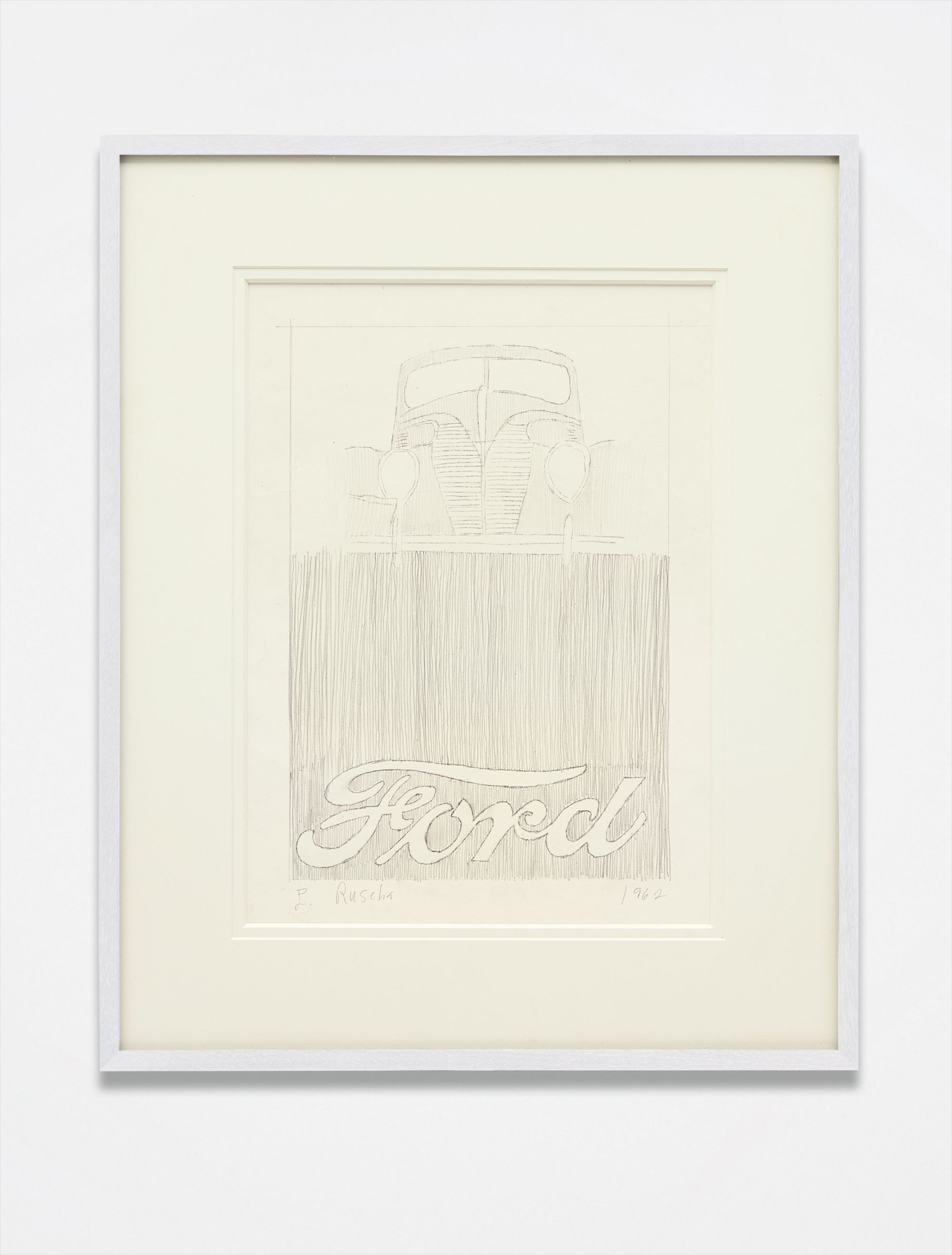

41
Ed Ruscha
Ford
Full-Cataloguing
Nowhere is pre-planning more apparent than in a drawing that has been inspired and copied from a photograph of the same subject matter. In a prelude to the smokey veils and half tones of his gun powder drawings which would come a few years later, Ford shows how the artist used photography as a mechanism for his pre-meditated compositions. The work itself was derived from a snapshot taken in 1960 of his good friend and fellow artist, Joe Goode’s car. This technical process of representational drawing from photo reference contrasts starkly to what Margit Rowell explains as “the spontaneous personal expression and heroic stance of the Abstract Expressionism touted in his painting classes,” which Ruscha was exposed to in his studies at the Chouinard Art Institute, now widely known as CalArts. (M. Rowell, Cotton Puggs, Q-Tips, Smoke and Mirrors: The Drawings of Ed Ruscha, New York, Whitney Museum of American Art, 2004, p. 12) Not only the artist himself, but the viewer as well, finds contentment in the visual landscape of the every-day object and even more so when it is expertly executed by hand in an almost photo-realistic manner.
The present lot exudes comfort in not just its formal aesthetic, but in its subject matter as well. In a culture flooded by mass-media and material imagery, Ruscha was waxing nostalgia about the all American cross-country drives he had done with Joe Goode years earlier. In his own words Ruscha says, “I like long car trips, and just driving around. It seems like such a natural, American thing to do.” When asked in the same interview about his love of both cars and gas stations, Ruscha notes that “We were the first big automobile generation. I see cars as very efficient and well-designed machines.” Of Joe Goode’s car he remarks, “It was a 1938 Plymouth. It was a beauty. It had a personality all its own. Cars aren’t as interesting as they used to be. They all look alike now.” The artist’s obvious affection for his subject matter is exemplified by the soft, carefully rendered line work. Executed with the technical skills of a professional graphic designer and draftsman, Ford serves not only as a jumping off point for a prolific career for Ruscha, but also as an important influence for artists to come.
Ed Ruscha
American | 1937Quintessentially American, Ed Ruscha is an L.A.-based artist whose art, like California itself, is both geographically rooted and a metaphor for an American state of mind. Ruscha is a deft creator of photography, film, painting, drawing, prints and artist books, whose works are simultaneously unexpected and familiar, both ironic and sincere.
His most iconic works are at turns poetic and deadpan, epigrammatic text with nods to advertising copy, juxtaposed with imagery that is either cinematic and sublime or seemingly wry documentary. Whether the subject is his iconic Standard Gas Station or the Hollywood Sign, a parking lot or highway, his works are a distillation of American idealism, echoing the expansive Western landscape and optimism unique to postwar America.